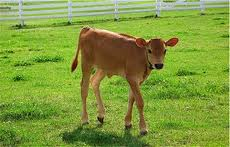What do we mean by the term ‘clean eating’?
Clean eating involves the adherence to a diet based on whole foods, which are unprocessed or minimally processed and as close to their natural state as possible. The diet embraces vegetables, fruits, whole grains, pulses, tubers, herbs, spices, lean meats, eggs, fish, nuts, seeds and unrefined oils. This also means eliminating refined grains, additives, preservatives and pesticides where possible and basically anything food-product-like.
Why is it so popular – particularly in recent years?
Powered by social media, it has been more absolute in it’s claims, offering a new way of eating that comes without any fear or guilt and more popular in it’s reach than any previous advice on healthy eating. The promise of inner purity and outer beauty supported by images of green juices, quinoa bowls and raw vegan energy balls has been profound.
Clean eating established itself as a challenge to mainstream ways of eating and has changed the foods available to all of us and the way they are spoken of. Demand for products fitting with the clean eating lifestyle have grown exponentially in the UK with avocados now outselling oranges.
Is it potentially dangerous?
Things have evolved somewhat since James Duigan, an early adopter of the #eatclean movement back in 2009 released his book, the ‘Clean and lean diet’ and helped millions of people improve their diets. It has now become clear that clean eating is more than a diet; it is a belief system, based on the idea that the way most people eat is not simply fattening, but impure.
Orthorexia is a condition in which the sufferer systematically avoids specific foods that they believe to be harmful. It is a serious eating disorder rooted in an obsession with eating foods that one considers healthy. Although not formally recognised in the Diagnostic and Statistical Manual (DSM), awareness about orthorexia is on the rise and the younger generation seem to be particularly at risk, due to following #eatclean on social media from potentially unqualified and disordered advice.
Are there positives to come out of the clean eating movement?
Modern food production has become so sophisticated that simply eating whole foods can be a challenging proposition these days but as far as I see it, the idea is more about being mindful of the food’s pathway between its origin and our plates.
The health problems associated with highly processed food are numerous. Foods with genetically modified organisms (GMOs) have been linked to cancer and infertility. Highly processed foods are stripped of nutrients needed for overall health and these foods tend to have additives that overstimulate the production of dopamine, the ‘pleasure’ neurotransmitter, which perpetuates a negative cycle of constant junk food cravings.
So one of the main positives to come of the clean eating movement is that it’s helped many people to recognise and clear out junk food from their diets. A healthy mindset with regards to food is important for our overall well being. Food is only one component of the way we nourish ourselves. I would scrap #eatclean and replace it with #chillout for a more balanced and sustainable view on eating well and advise not to get too hung up on the details.
How can we benefit from clean eating?
As I’m sure many can attest, eating a burger and chips or a fry up before training can leave you feeling pretty heavy and lethargic during your activity. It makes sense to eat foods which have been minimally processed and still contain an abundance of nutrients because our bodies function well when we give them the nutrients they need.
So clearing out junk foods and eating natural, highly nutritious foods will help you to perform better in training and assist with faster recovery post-training. Instead of feeling heavy and lethargic, you should feel light and energised from the food you choose to eat. That’s how you know you’re choosing the right foods for you.
Improving your diet and eating well should be about bringing in more fresh and natural foods and gradually crowding out the junk. It’s not necessary to obsess over food labels or macros. When you’re eating fresh, wholesome food, you’re nourishing your body and your body will respond with high energy levels and improved performance.
Always remember to drink plenty of water with whatever diet you’re following. Just 1% dehydration is enough to affect performance so keep topped up, especially in the warmer weather and during longer training sessions. Consider a homemade isotonic sports drink to take with you. Add to a bottle: 250ml fresh apple juice, 250ml water and a pinch of Himalayan crystal salt. Increase the quantities of this recipe, the more distance you’re covering.
How to eat clean
Here’s a list of items to choose from which fit with a clean eating diet. It’s important to note that some clean eating proponents would adhere to a strictly plant based diet, whereas others might include eggs, dairy, meat or fish. Pesticide-free, organic food is preferable to avoid consuming added hormones or chemicals.
Unprocessed foods:
Fresh fruits
Vegetables
Tubers
Herbs
Spices
Beans
Lentils
Nuts
Seeds
Eggs
Minimally processed foods:
Unrefined grains, like high quality wholegrain bread and pasta, jumbo oats, quinoa, and brown rice
Frozen fruits and vegetables
Wild or organic fish
Wild or organic unprocessed meat
Organic dairy
Unrefined oils.
Did you know?
Eating more whole and minimally processed foods is in line with current nutrition recommendations, which emphasise eating fruits, vegetables, whole grains, nuts, seeds, fish and lean animal proteins whilst reducing intake of added sugars, fat and sodium. The new dietary guidelines have moved away from focusing on individual nutrients and now focus on overall diet. If clean eating moves people toward eating more whole plant foods, leaner cuts of meat and more fish, that’s in line with the DASH (dietary approaches to stop hypertension) diet, the Mediterranean diet and other diets that help fight chronic disease over time.



